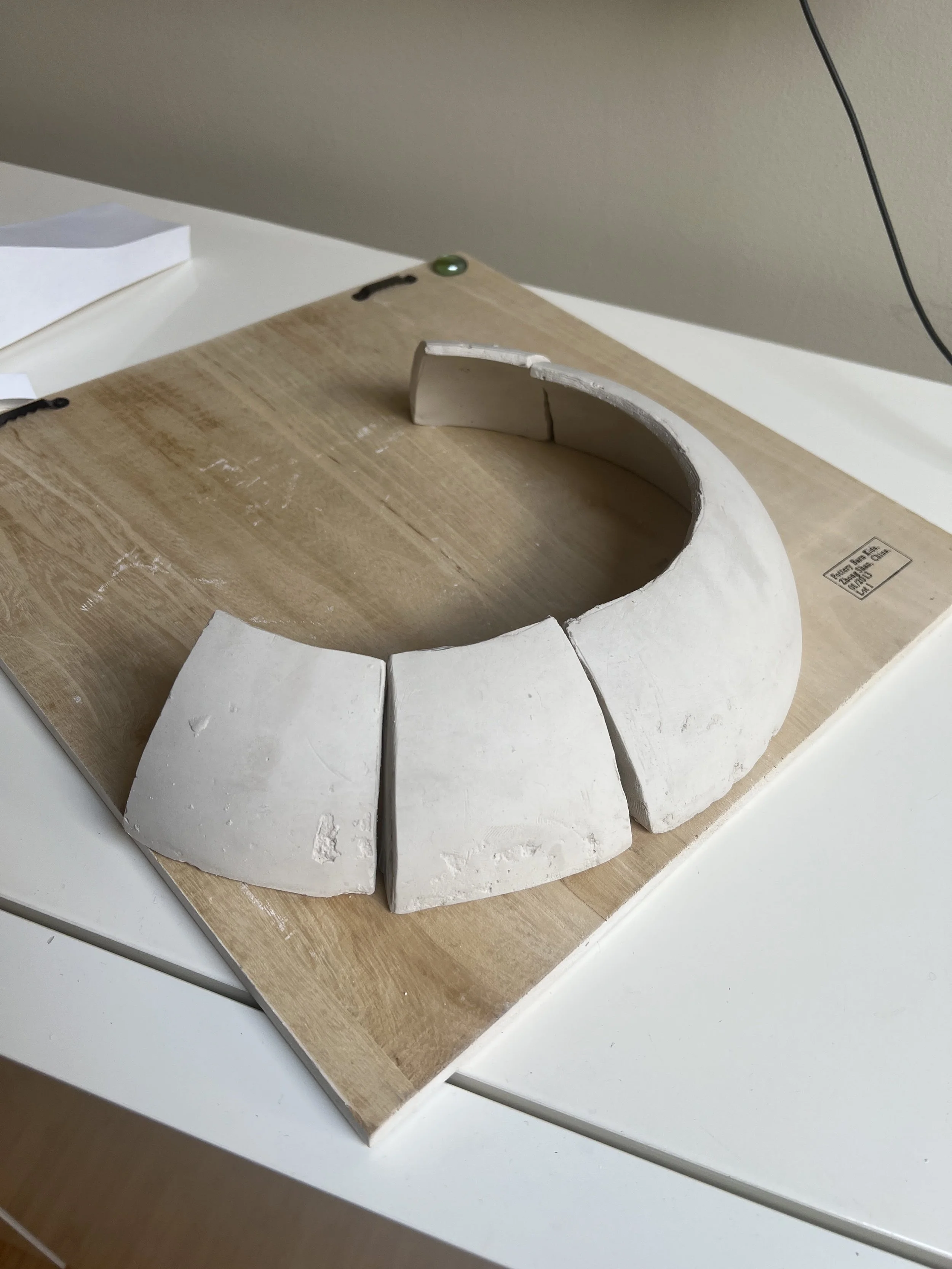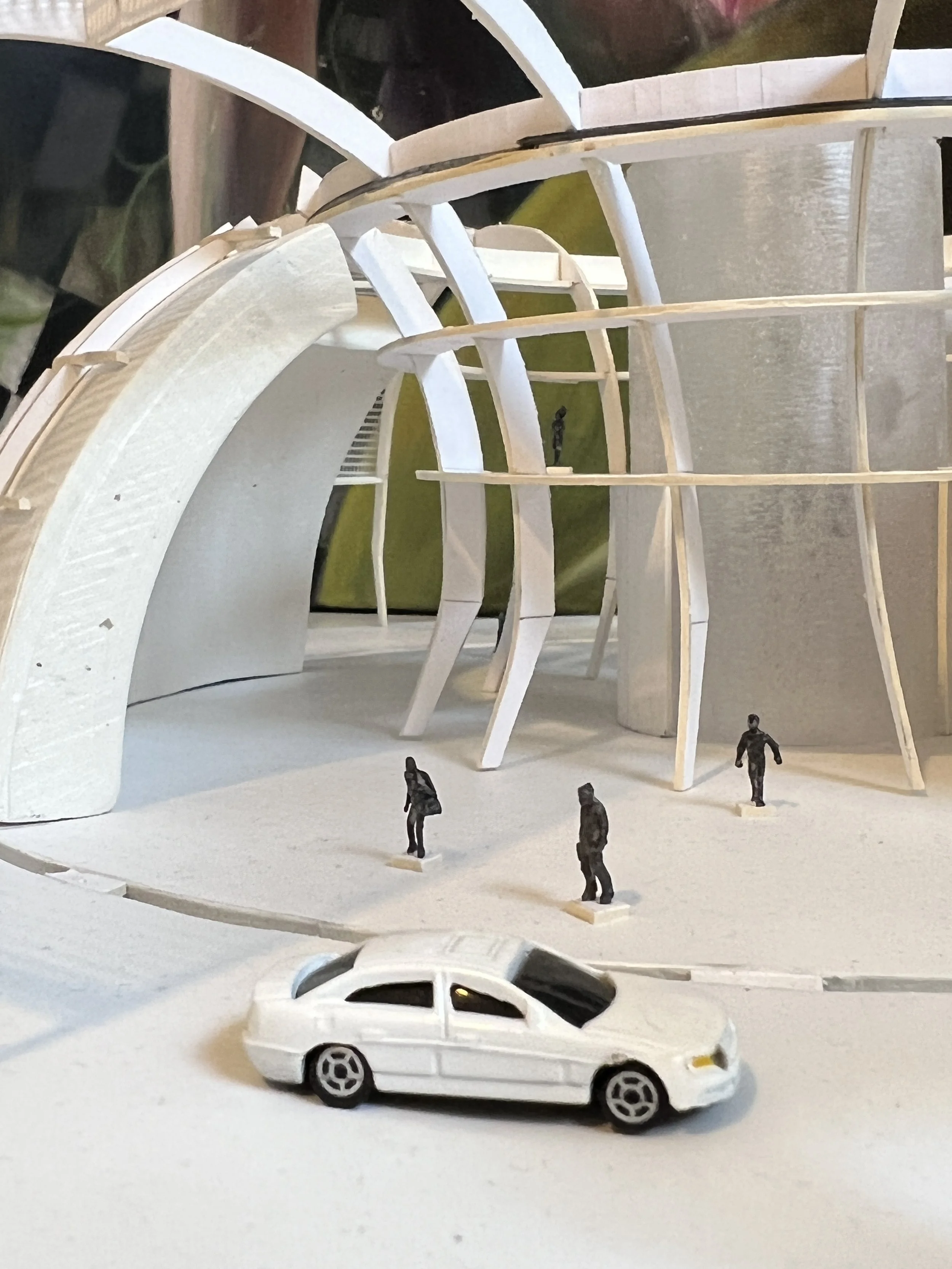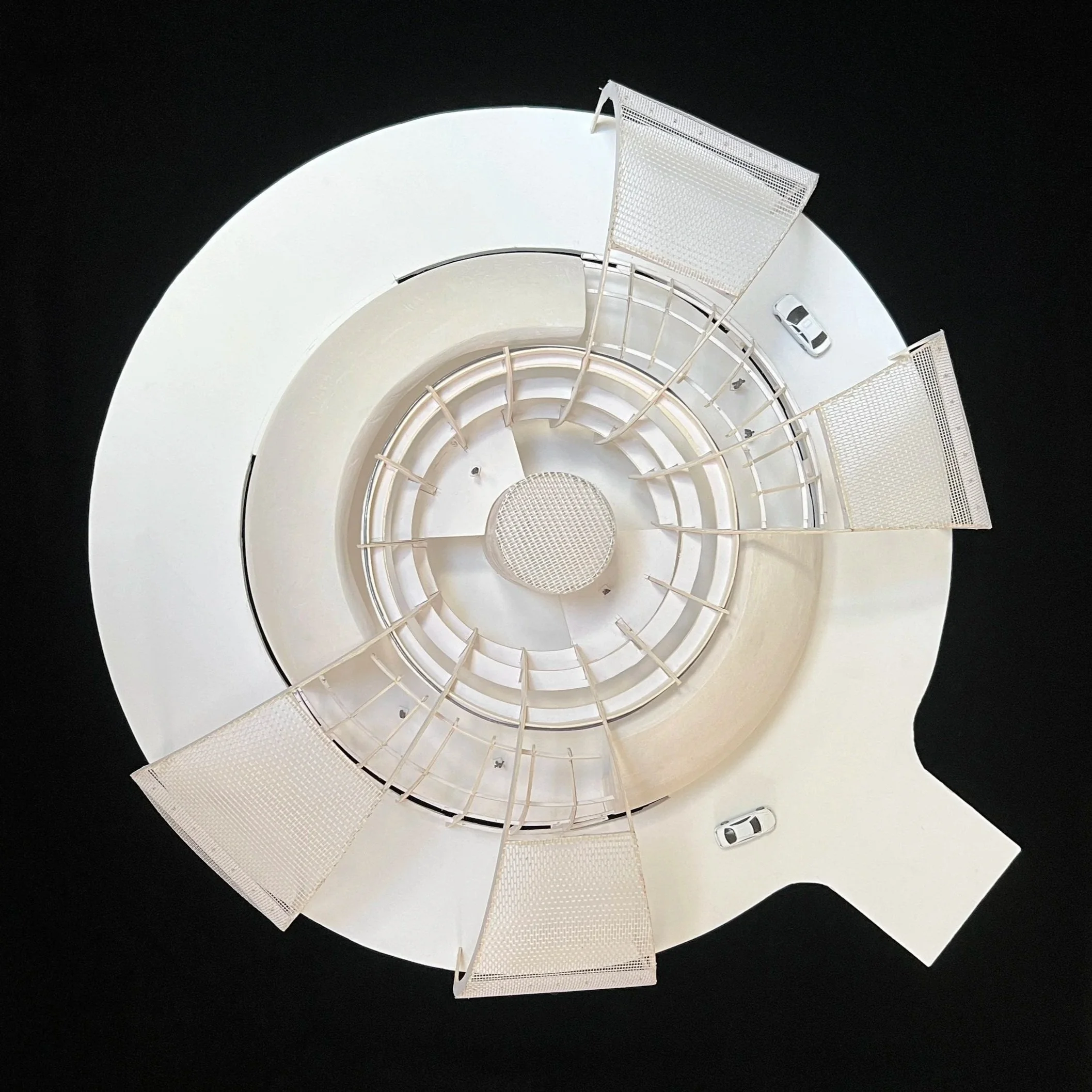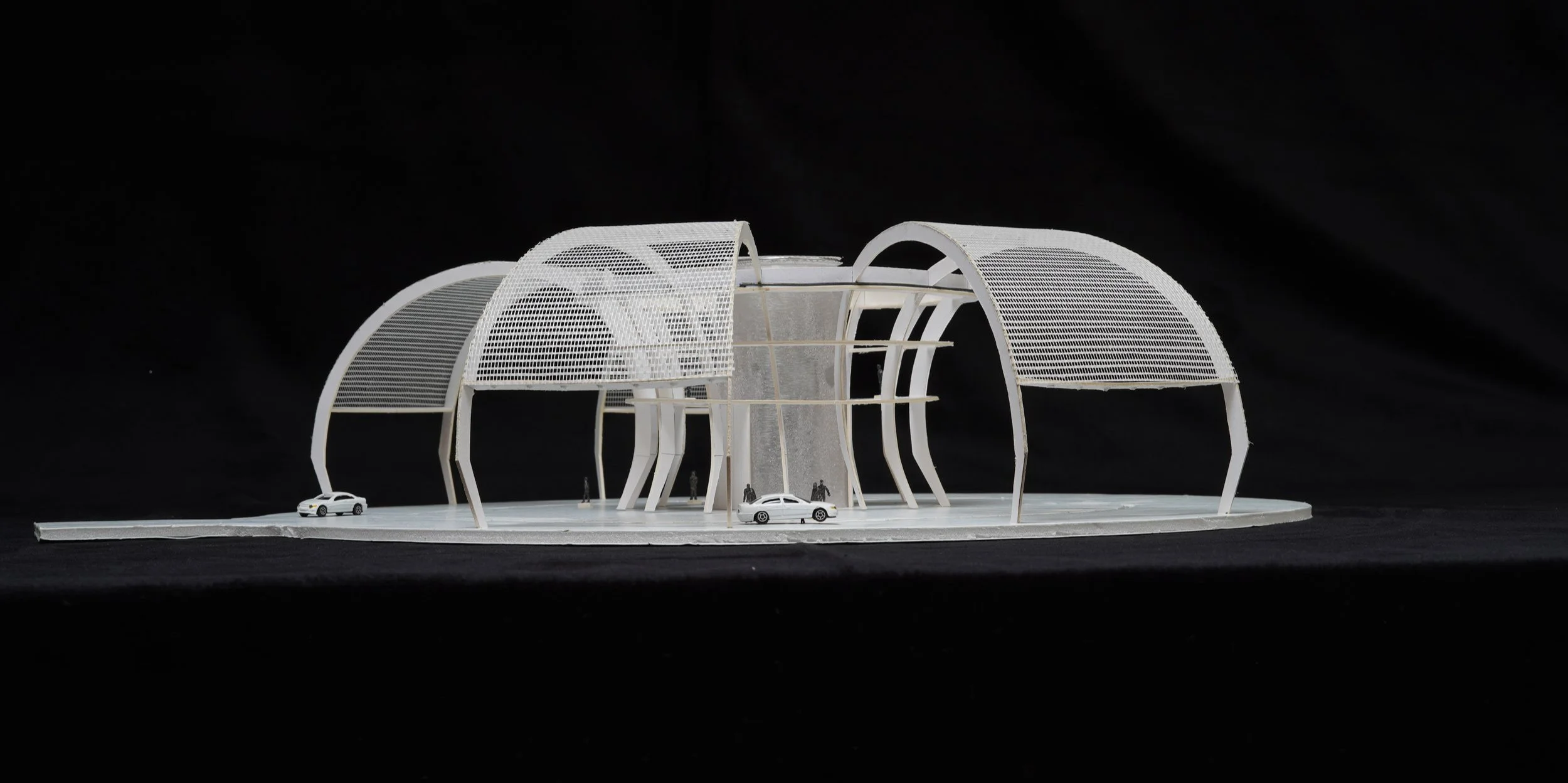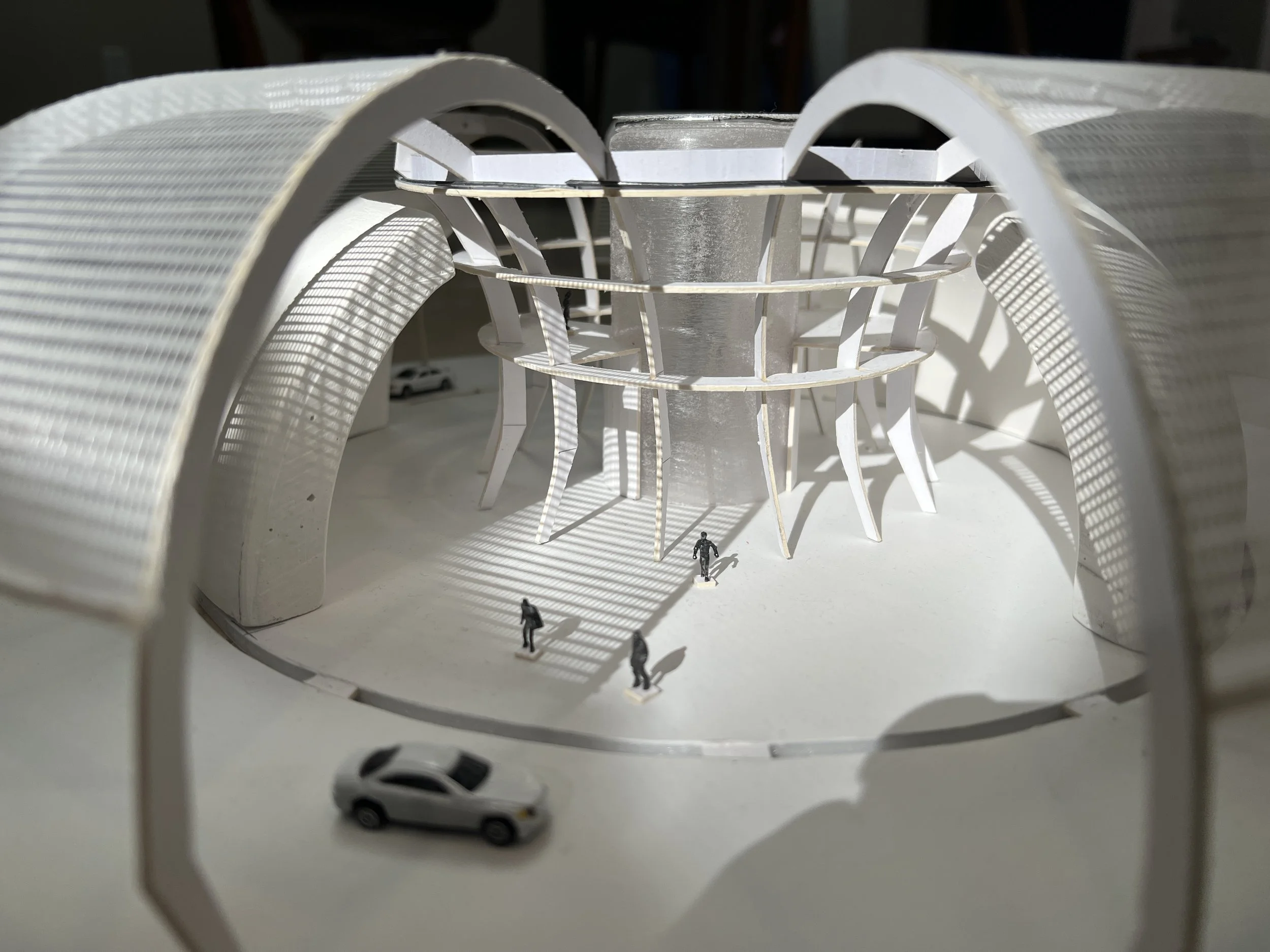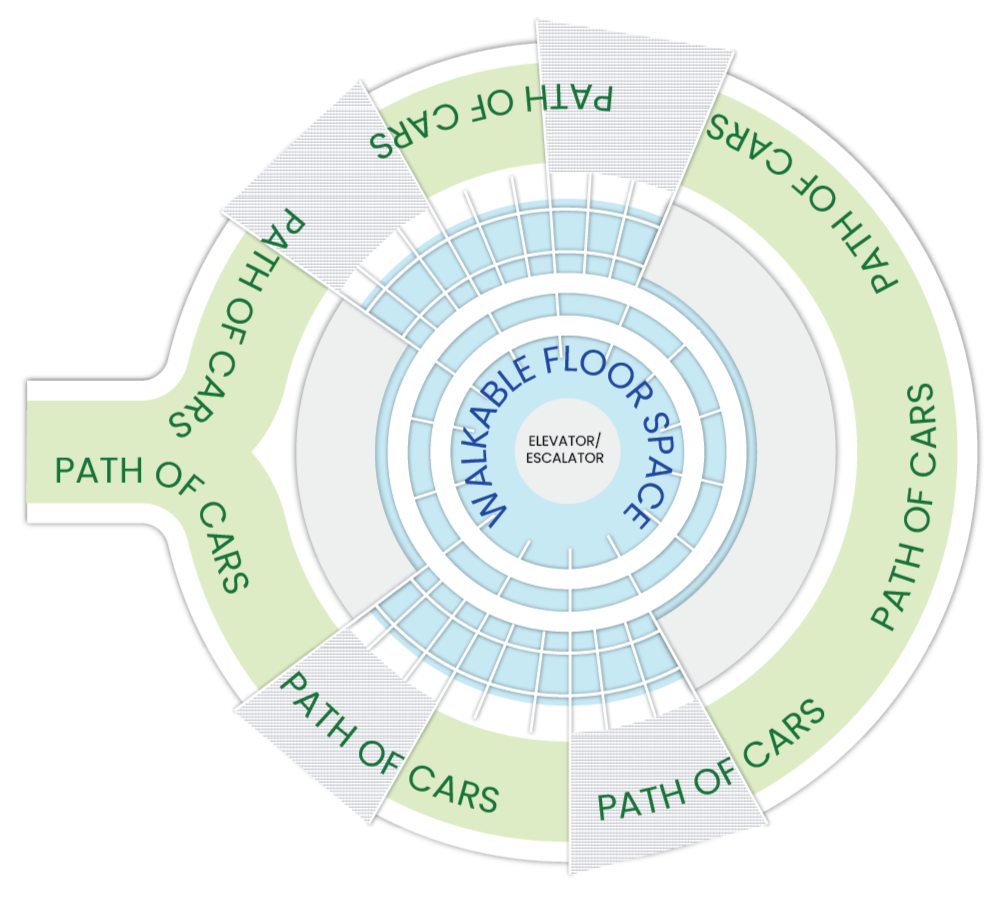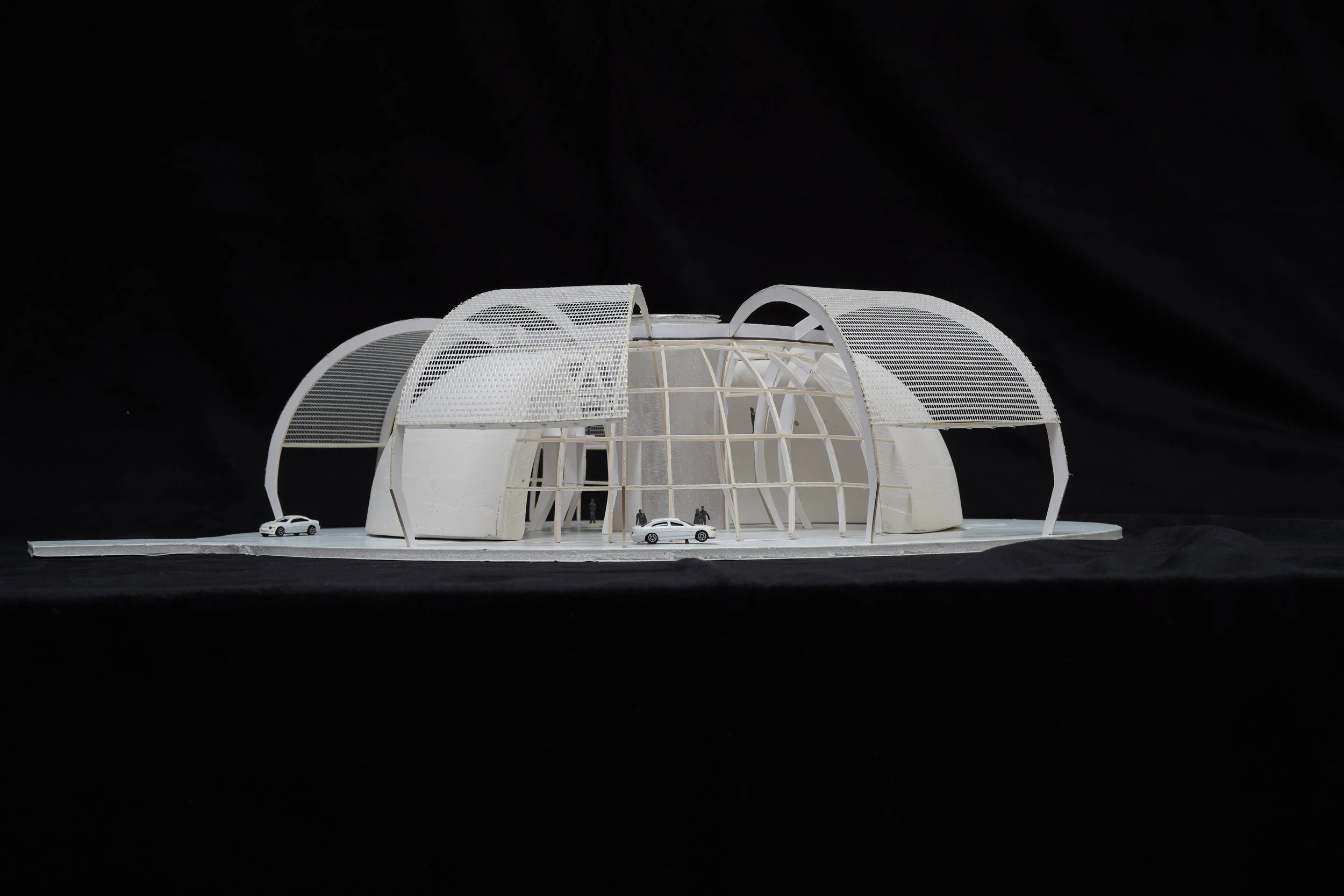
Cycle
Autonomous Car Pickup Station for Airports
Cycle is a circular airport shelter and waiting station concept designed for autonomous car pickups. As urban centers and airports adapt to the rise of ride-sharing and autonomous vehicles, new infrastructure is needed to streamline traffic and improve the passenger experience. This project explores how cyclical flow and efficiency can be embedded into architectural design, creating a space that is both functional and adaptive to the evolving demands of modern transportation.
Time
Team
Year
8 Weeks
Individual
2024
BRIEF
Design an architectural system that addresses inefficiencies in current infrastructure, creating more adaptive user experiences.

PROJECT FOCUS
Airport rideshare waiting stations are often marked by inefficiency—heavy congestion, unclear pickup points, and long passenger wait times. As ridesharing demand increases, these systems struggle to manage traffic flow, frustrating both travelers and drivers while straining airport operations.
The rise of self-driving cars sparked the idea for this project, serving as a catalyst to rethink outdated infrastructure. While not limited to autonomous vehicles, the focus is on streamlining the pickup process: reducing congestion, coordinating arrivals, and creating a smoother, more adaptive experience for all users.
CHALLENGES
Traffic
Current airport rideshare pickup zones are often overwhelmed by high volumes of vehicles, leading to congestion, bottlenecks, and inefficient circulation. This slows down operations and increases stress and confusion for passengers trying to locate their rides.
Passenger Wait Time
Travelers frequently face long and uncertain wait times due to poor coordination between arriving cars and waiting passengers. Unclear pickup points and overcrowded curbsides add to the frustration, diminishing the overall airport experience.
Infrastructure Limitations
Existing pickup stations were not designed for the scale of today’s ridesharing demand. As airports continue to grow, these outdated systems struggle to adapt, highlighting the urgent need for reimagined infrastructure that prioritizes efficiency and clarity.
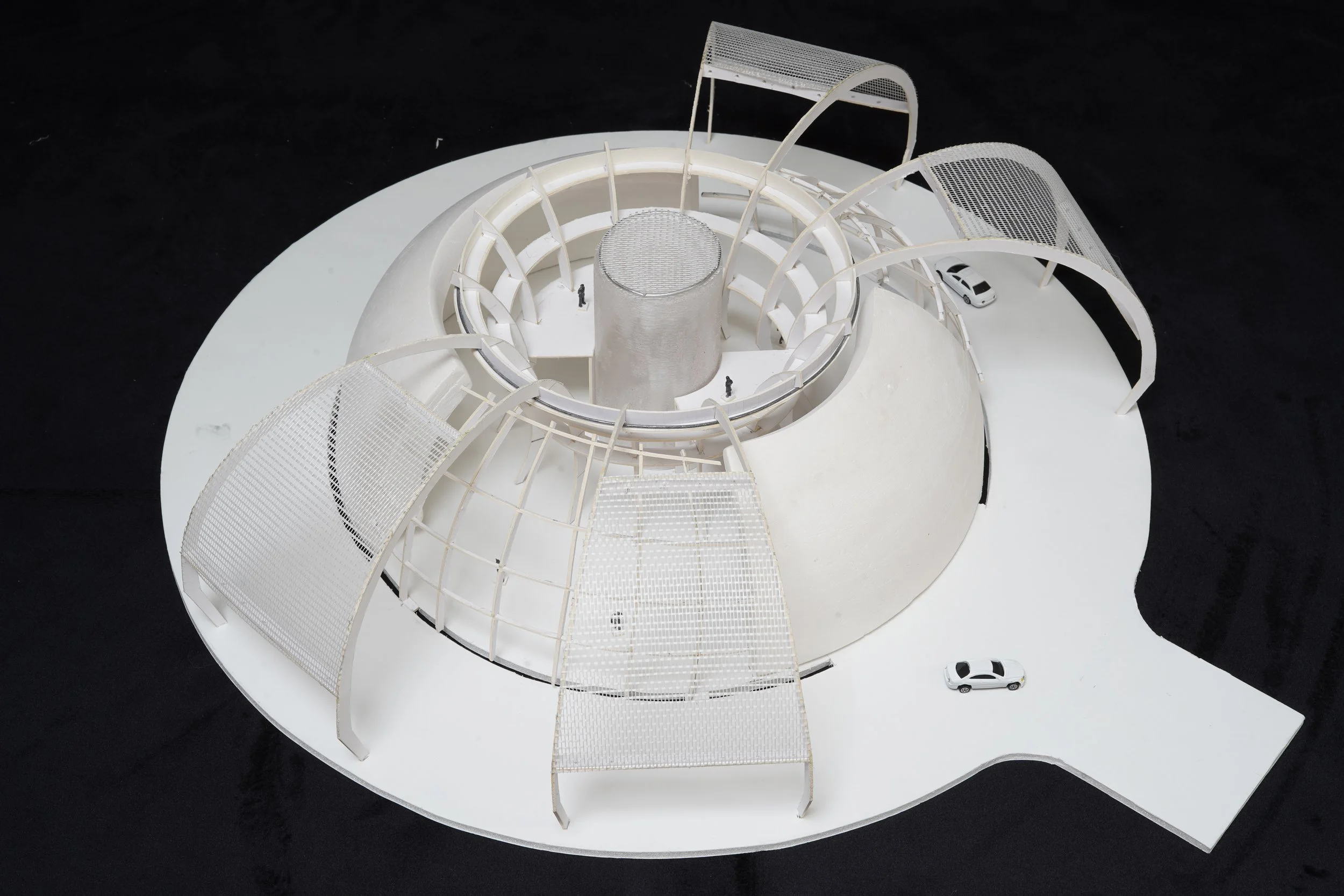
EXPLORATION ON CYCLES
The design of this project was guided by the inherent efficiency of cycles—systems that flow continuously without a defined beginning or end. Circles, in particular, embody this principle, offering the most effective form for movement. Much like a wheel, they allow for seamless, uninterrupted flow, minimizing friction and congestion. This observation became the foundation for exploring how architectural form could support smoother transitions and reduce inefficiencies.
The circular layout enables both cars and pedestrians to move without conflict, avoiding the bottlenecks that often occur in linear or angular systems. This approach creates a more intuitive and adaptive spatial experience, streamlining traffic flow while reducing waiting times and confusion.
Beyond functionality, the form reinforces the symbolic qualities of continuity and repetition. Shifting walls adapt with the seasons—opening for airflow and light in warmer months, and closing to provide warmth and shelter in colder ones. Together, these elements merge concept with practice, creating a design that is efficient, adaptable, and expressive of the natural cycles that inspired it.
Streamlined Passenger Flow
To improve efficiency and reduce congestion, the design incorporates an underground walkway system that links directly to each Cycle pickup platform. By placing pedestrian circulation below ground and vehicle movement above, the system ensures smoother traffic flow, shorter wait times, and a more organized pickup experience.
Passenger Journey
Enter the underground hallway from the terminal.
Walk through the corridor toward the assigned hub.
Take an elevator or escalator up to the Cycle platform.
Arrive directly at the pickup station, ready to meet the vehicle.
PROCESS



